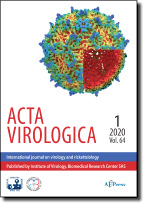Acta Virologica Vol.67, No.1, p. 91 – 98, 2023
|
| Title: High resolution melting curve analysis for rapid detection of severe acute respiratory syndrome coronavirus 2 (SARS-CoV-2) variants |
| Author: Seyed Jalal Kiani, Mehdi Ramshini, Farah Bokharaei-Salim, Tahereh Donyavi, Babak Eshrati, Majid Khoshmirsafa, Saied Ghorbani, Ahmad Tavakoli, Seyed Hamidreza Monavari, Zohreh Yousefi Ghalejoogh, Mohammad Abbasi-Kolli |
|
Abstract: Since the emergence of the original Wuhan SARS-CoV-2 strain, several new variants of the virus have emerged. Alpha, Beta, Gamma, Delta and the most recent Omicron variants have been introduced during this pandemic. Several methods including, but not restricted to, allele-specific PCR, ligation with rolling circle amplification and real-time PCR with allele-specific probes are able to detect mutations as low as a single nucleotide polymorphism. High-resolution melting curve analysis is another technique to assess any mutations in a nucleic acid chain. Confirmed samples with SARS-CoV-2 infection were subjected to variant identification using a de novo-designed HRM assay. In order to select for mutations with the highest effect on Tm of the amplicon, deletion mutations of NSP6 (Del 3675-3677), and S1 (Del 144) were chosen for HRM analysis. HRM analysis for the amplicon of the primer set-1 (NSP6) resulted in Tm differences of -0.39°C, +0.4°C, and -0.6°C between Alpha, Delta, and Omicron variants, respectively, in comparison to the original Wuhan strain. Moreover, HRM analysis of the amplification performed by primer set-2 (S1) led to Tm differences of +0.32°C, -0.26°C, and +0.24°C between Alpha, Delta, and Omicron variants, respectively, in comparison to original Wuhan strain. The test was able to specify each sample to its variant group with more than 90 percent of confidence. The results obtained in this study demonstrate that using a single closed-tube strategy with a HRM-equipped machine, screening new variants of the virus is possible in a fast and reliable way.
|
|
| Keywords: high resolution melting; SARS coronavirus 2; mutation; variant; genotyping |
|
|
Published online: 22-Mar-2023
|
| Year: 2023, Volume: 67, Issue: 1 |
Page From: 91, Page To: 98 |
doi:10.4149/av_2023_109
|
|
 download file download file |
|
|
|
|
 download file
download file
